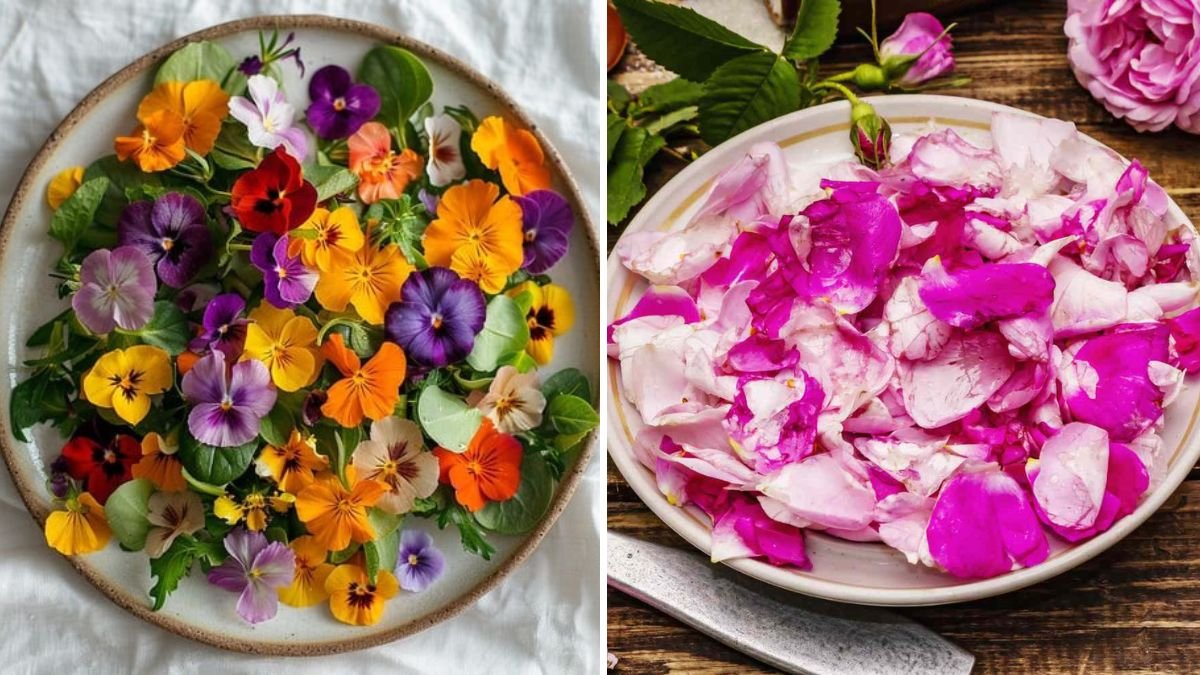In recent years, edible flowers have become a trending ingredient in both home kitchens and gourmet restaurants. Beyond their beauty, they offer unique flavors, textures, and nutritional benefits, transforming ordinary dishes into visually stunning and flavorful creations. From salads and teas to desserts and cocktails, edible flowers can elevate meals while providing antioxidants, vitamins, and phytonutrients.
This guide explores seven edible flowers that are safe to consume, how to use them in your cooking, and tips for incorporating them into daily meals to enhance both flavor and presentation.
1. Nasturtium (Tropaeolum majus)
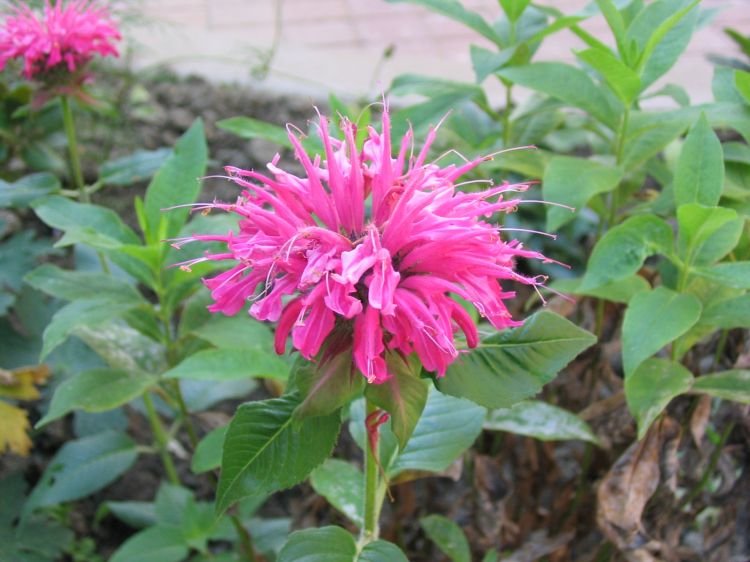
Nasturtium is a versatile flower with bright colors and a peppery, slightly spicy taste, reminiscent of arugula.
Features:
- Blooms in vibrant shades of red, orange, and yellow.
- Both flowers and leaves are edible.
- Adds a peppery, tangy flavor to dishes.
Culinary Uses:
- Salads: Sprinkle petals for color and a mild peppery kick.
- Garnishes: Top soups, sandwiches, or cheese plates for visual appeal.
- Stuffed Nasturtium Flowers: Fill with soft cheese or herbed fillings for an elegant appetizer.
Benefits:
- Rich in vitamin C and antioxidants.
- Adds a bold, natural flavor without overpowering dishes.
Tip: Use fresh petals for maximum color and crisp texture. Avoid older petals, which may taste bitter.
2. Calendula (Calendula officinalis)
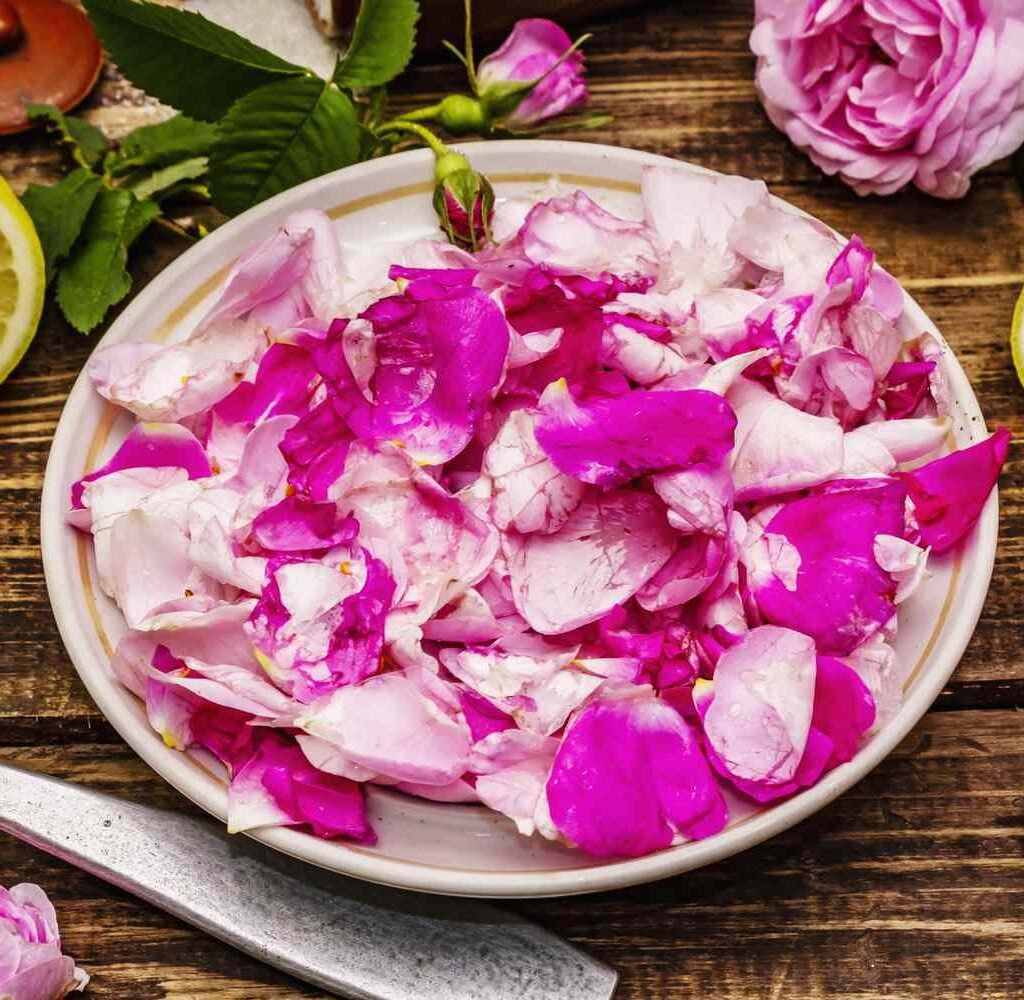
Known as “pot marigold,” calendula offers bright, sunny petals and a slightly tangy, peppery flavor.
Features:
- Colors range from yellow to deep orange.
- Petals are soft and versatile for cooking.
- Edible petals add color and mild taste, while the leaves are slightly bitter.
Culinary Uses:
- Rice and Grain Dishes: Sprinkle dried or fresh petals to mimic saffron color.
- Soups and Salads: Adds a pop of brightness and texture.
- Baked Goods: Incorporate petals into bread or muffins for visual appeal.
Benefits:
- Contains antioxidants like flavonoids and carotenoids.
- Supports eye health and immunity.
Tip: Dry petals to extend shelf life, but use sparingly as the flavor intensifies when dried.
3. Pansies (Viola tricolor var. hortensis)
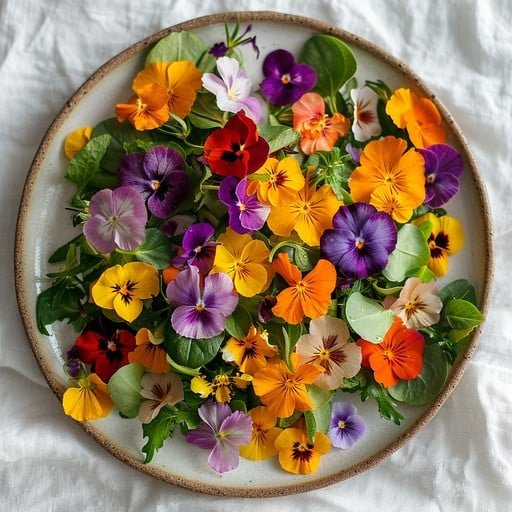
Pansies are delicate flowers with mild, slightly grassy flavor, perfect for a variety of dishes.
Features:
- Colors range from purple, blue, and yellow to multicolor blends.
- Soft petals are visually striking and edible.
- Adds a subtle taste without overpowering food.
Culinary Uses:
- Salads: Scatter fresh petals over greens.
- Desserts: Decorate cakes, cupcakes, and pastries.
- Frozen in Ice Cubes: For colorful, decorative additions to drinks and cocktails.
Benefits:
- Contains antioxidants and vitamins A and C.
- Safe for children and adults, making it ideal for decorative meals.
Tip: Gently wash petals before use to remove dust or small insects.
4. Borage (Borago officinalis)
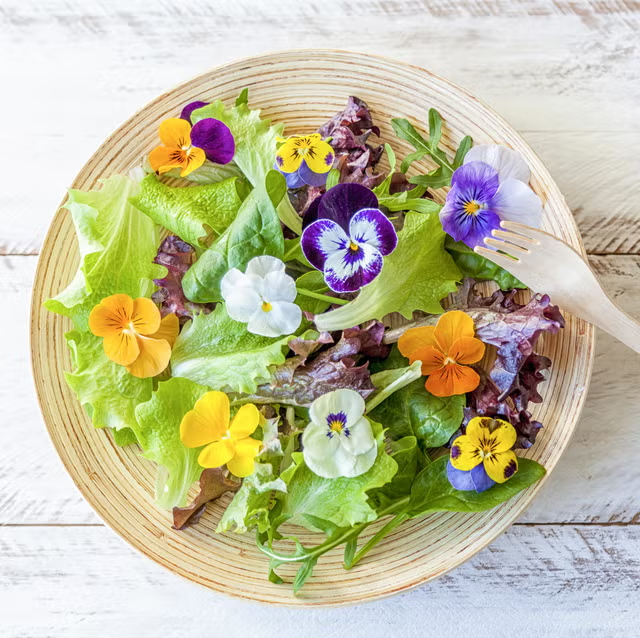
Borage flowers are known for their mild cucumber-like flavor, which adds freshness to savory and sweet dishes.
Features:
- Bright blue star-shaped flowers with occasional white variants.
- Entire flower is edible, adding visual and flavor appeal.
- Leaves can also be consumed but are slightly prickly and better cooked.
Culinary Uses:
- Cocktails: Float petals on drinks for a natural garnish.
- Salads: Add petals to green salads for mild flavor and color.
- Desserts: Decorate cakes, tarts, and custards.
Benefits:
- Contains vitamins A and C, as well as trace minerals.
- Adds a fresh, cucumber-like flavor naturally.
Tip: Harvest flowers early in the day for the best color and flavor.
5. Hibiscus (Hibiscus sabdariffa)
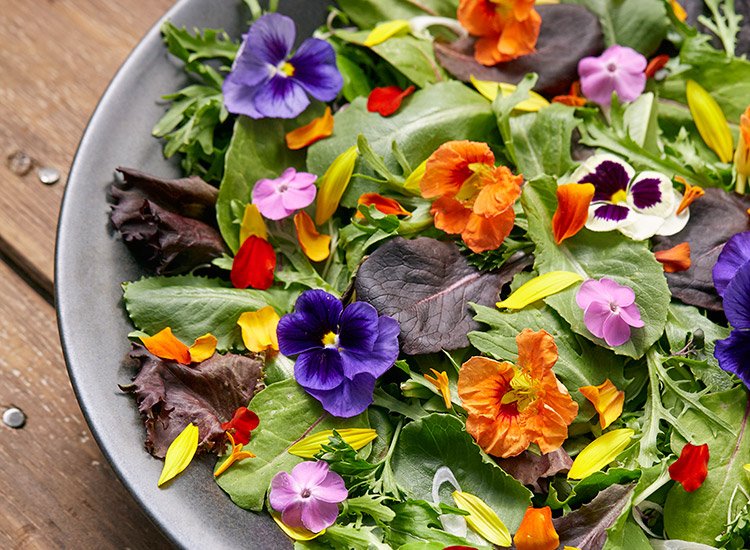
Hibiscus flowers are tart, vibrant, and commonly used for teas and infusions.
Features:
- Deep red to magenta petals with a bold, tangy flavor.
- Petals are used fresh or dried.
- Naturally adds color to beverages and dishes.
Culinary Uses:
- Teas and Infusions: Steep petals for tart, vitamin-rich herbal tea.
- Jams and Jellies: Infuse color and tanginess into spreads.
- Salads: Chop petals and sprinkle for tangy notes and visual appeal.
Benefits:
- Rich in antioxidants, vitamin C, and minerals.
- May help support heart health and hydration.
Tip: Pair hibiscus with sweeteners like honey to balance its tartness.
6. Chamomile (Matricaria chamomilla)
Chamomile is well-known for its calming tea, but its flowers are also edible and can enhance the flavor of various dishes.
Features:
- Small, daisy-like blooms with a mild apple-like flavor.
- Both petals and flower heads are edible.
- Adds delicate flavor and aroma.
Culinary Uses:
- Teas: Brew petals alone or with other herbs for relaxing beverages.
- Desserts: Infuse cream, custards, or syrups with chamomile flavor.
- Salads and Garnishes: Sprinkle petals lightly over salads or baked goods.
Benefits:
- Contains antioxidants and anti-inflammatory compounds.
- Provides a gentle, soothing flavor to dishes.
Tip: Use chamomile sparingly; its subtle flavor can be easily overwhelmed by stronger ingredients.
7. Nasturtium (Revisited for Double Use)
Although we highlighted its peppery taste earlier, nasturtium seeds can also be pickled and used as a substitute for capers, showing the full versatility of edible flowers.
Culinary Uses:
- Pickled Seeds: Use in salads, dressings, or as a garnish for seafood.
- Petals and Leaves: Peppery flavor for fresh dishes.
Benefits:
- Offers a dual-purpose flower: edible petals and flavorful seeds.
- Adds color, spice, and texture in multiple culinary applications.
Tip: Harvest seeds once they are firm but not fully dried on the plant for pickling.
Tips for Using Edible Flowers Safely
- Choose Organic or Pesticide-Free Flowers: Avoid flowers treated with chemicals.
- Identify Accurately: Only use flowers known to be safe for consumption.
- Wash Gently: Rinse under cold water to remove dust or insects.
- Use Fresh: Fresh flowers provide the best flavor, color, and texture.
- Experiment Gradually: Start with small amounts to understand how each flower complements dishes.
- Combine with Complementary Ingredients: Match flavors, e.g., tart hibiscus with sweet desserts, or peppery nasturtium with salads and cheeses.
Benefits of Incorporating Edible Flowers in Meals
- Visual Appeal: Adds color, texture, and elegance to plates.
- Flavor Enhancement: Provides unique tastes ranging from sweet and fruity to spicy or tangy.
- Nutritional Boost: Many flowers contain antioxidants, vitamins, and minerals.
- Culinary Creativity: Encourages experimentation with plating, recipes, and presentations.
- Sustainability: Growing your own edible flowers reduces food miles and supports pollinators.
Conclusion
Edible flowers are a versatile and beautiful way to enhance your meals, combining taste, color, and nutrition. Flowers like nasturtium, calendula, pansies, borage, hibiscus, and chamomile provide endless culinary possibilities, from salads and teas to desserts and garnishes.
By growing or sourcing organic, pesticide-free flowers, washing them gently, and experimenting with flavors, anyone can create stunning, flavorful, and nutritious dishes. These edible blooms not only elevate the visual appeal of meals but also bring a sense of creativity and sophistication to everyday cooking.
Incorporating edible flowers into your culinary repertoire is more than a trend—it’s a celebration of nature’s beauty and flavor, turning ordinary meals into vibrant, multisensory experiences that delight both the eyes and the palate.
Tip: Keep a seasonal rotation of edible flowers in your garden to ensure a continuous supply of fresh, colorful blooms for cooking and decoration throughout the year.
